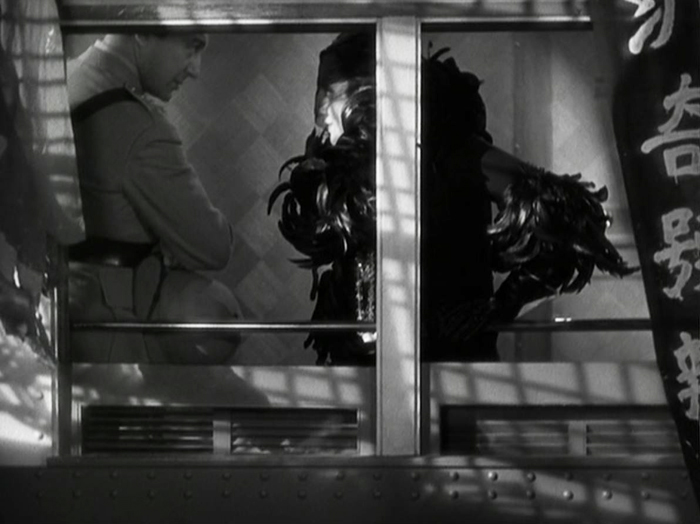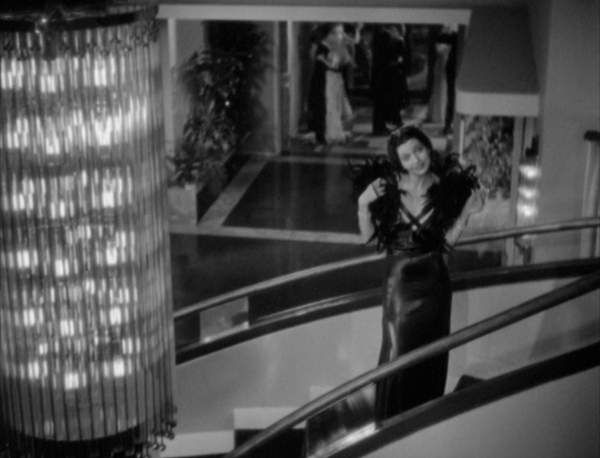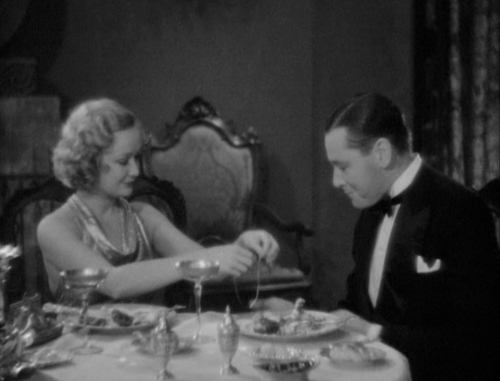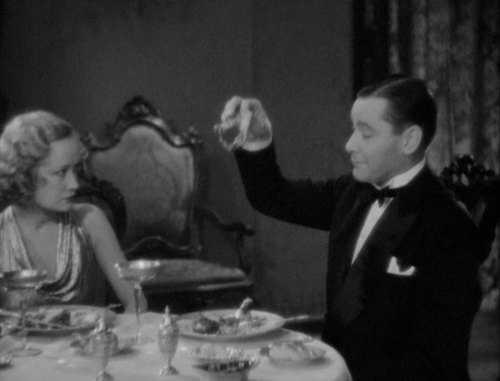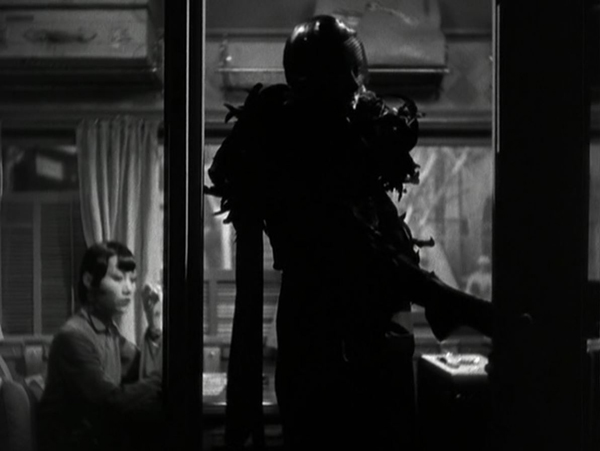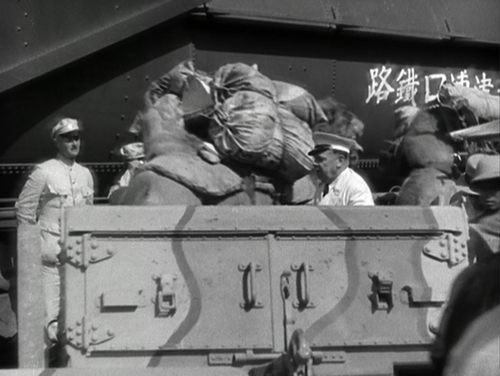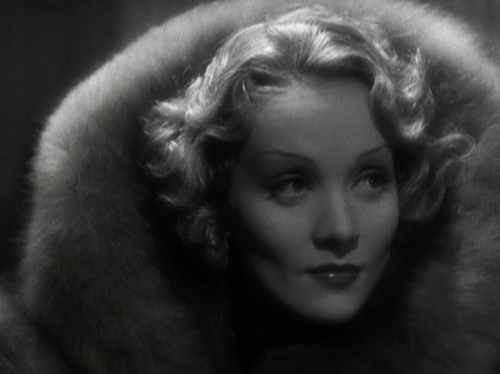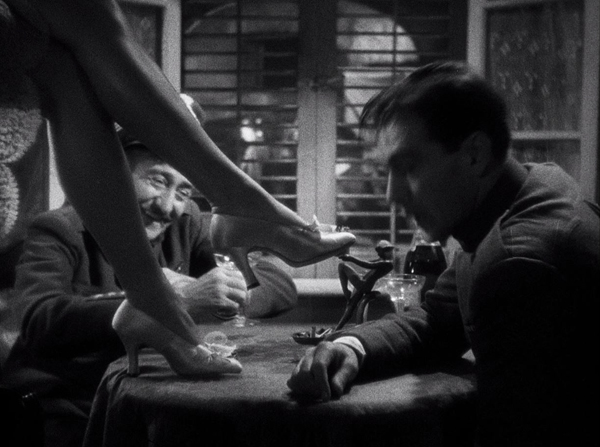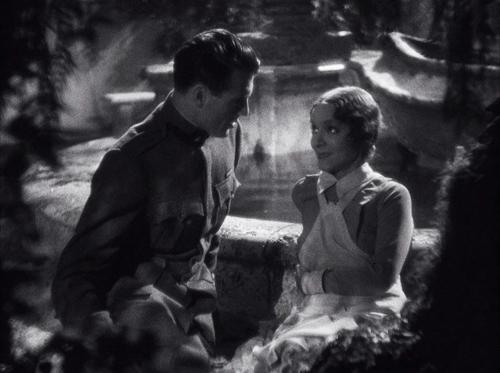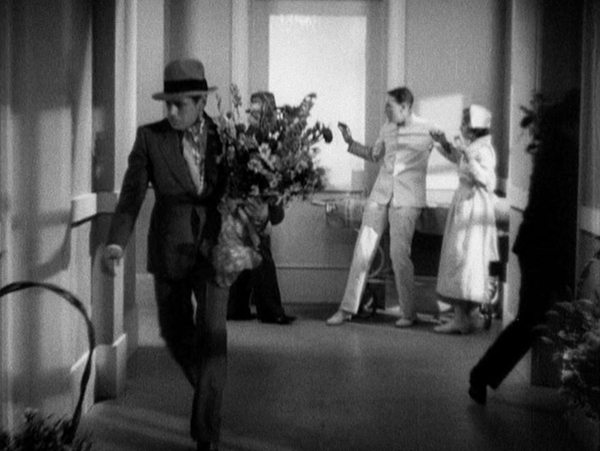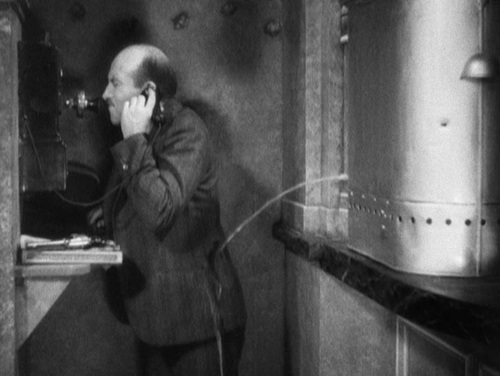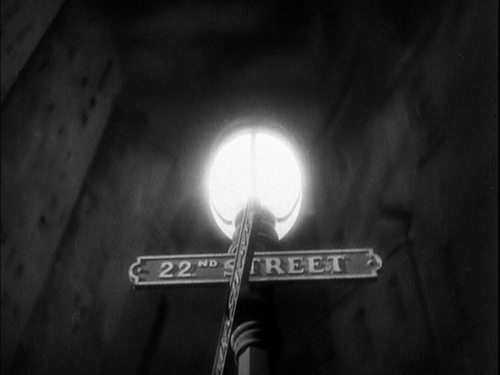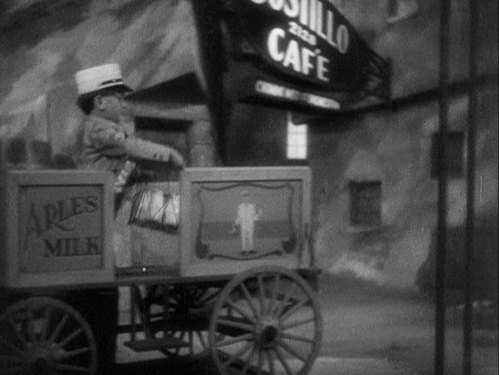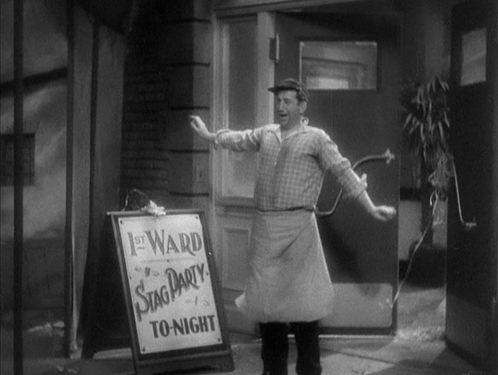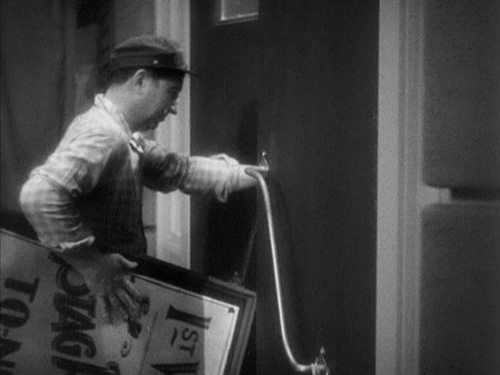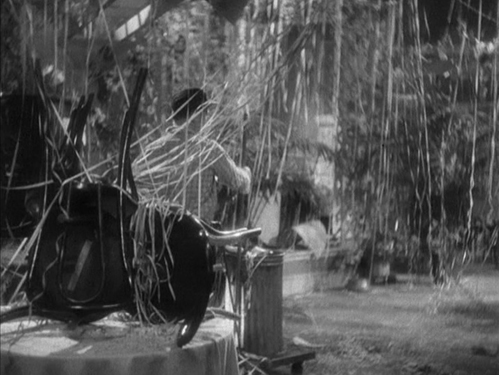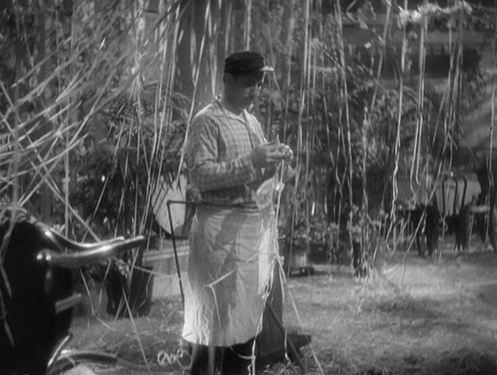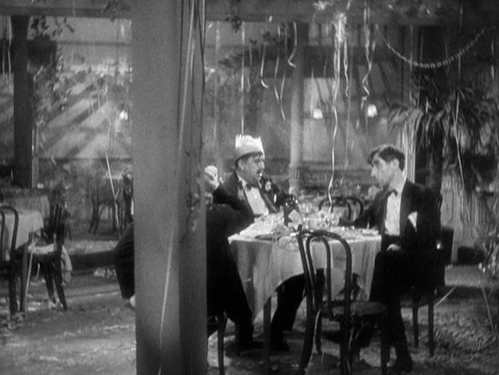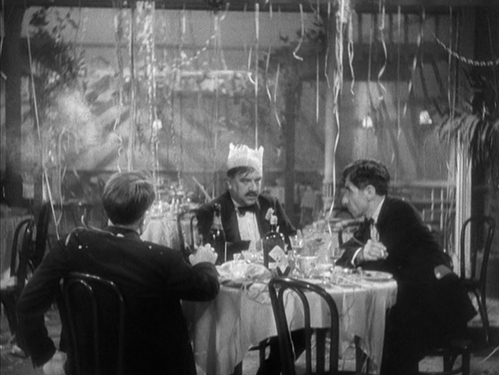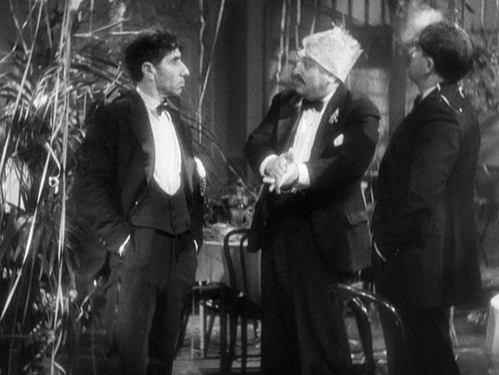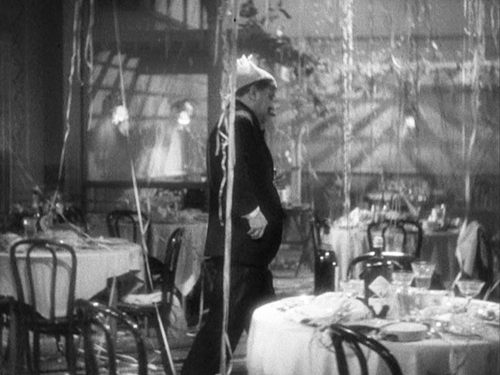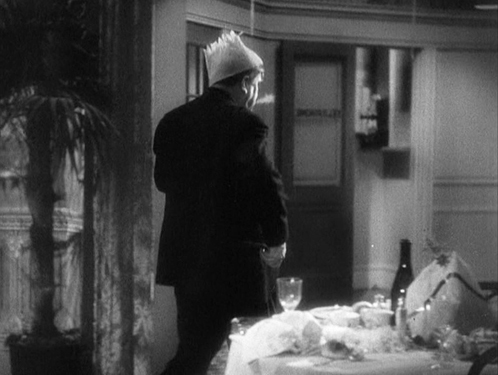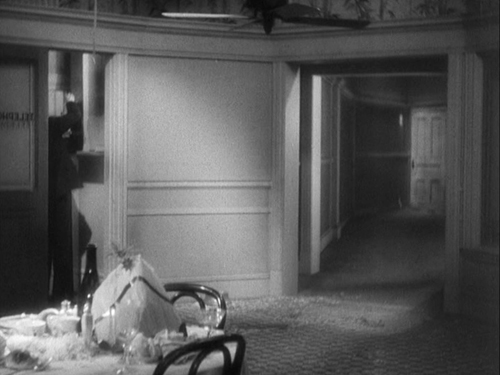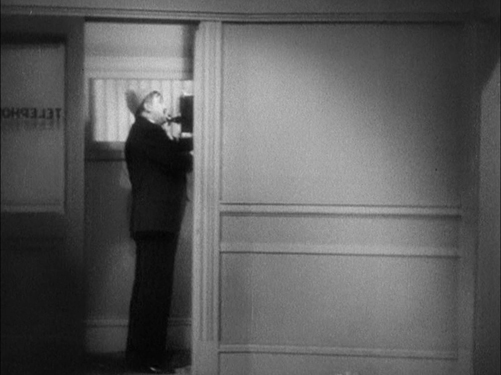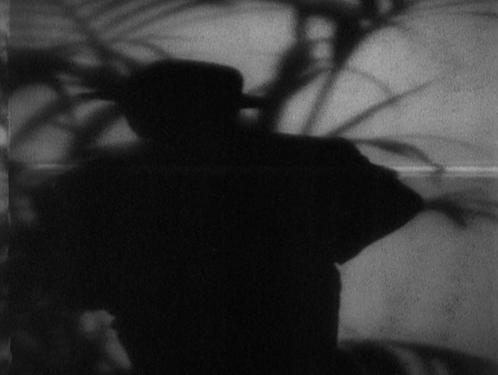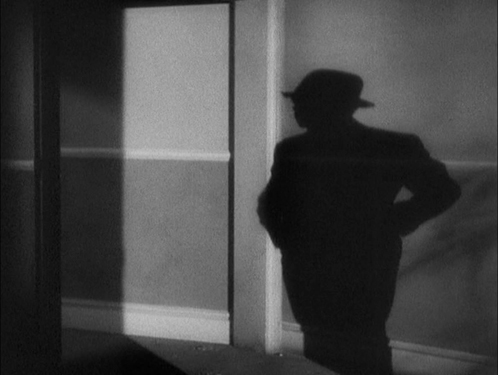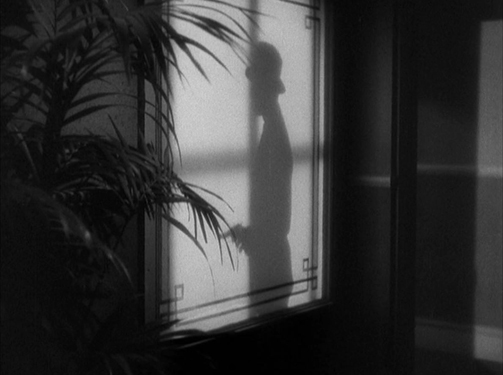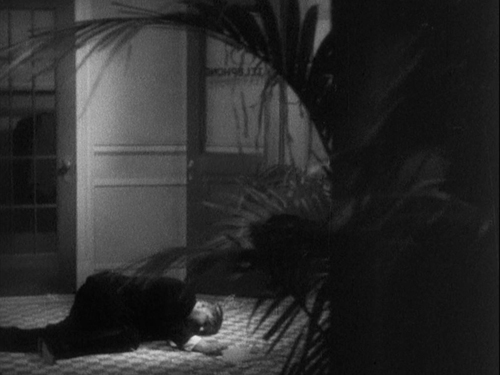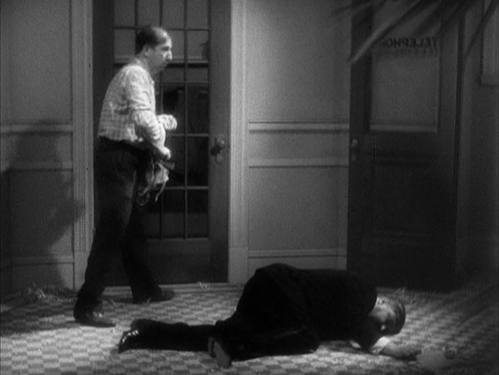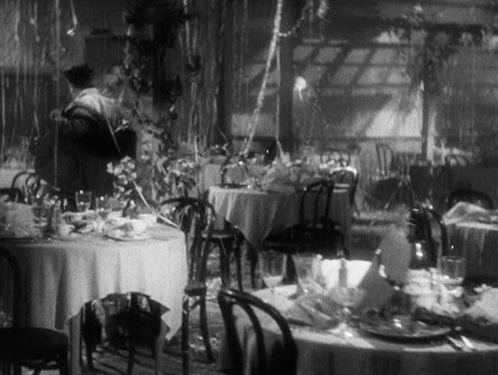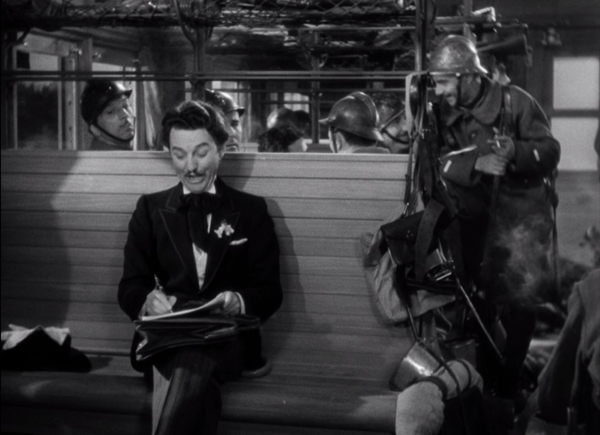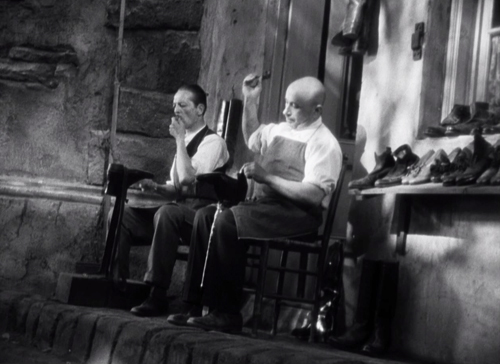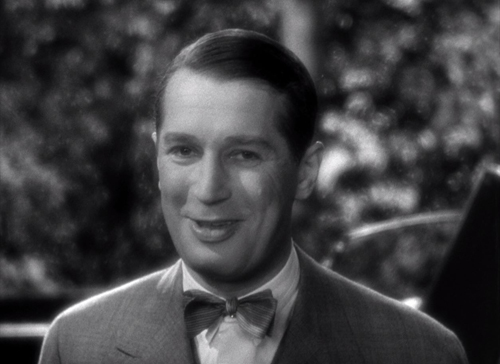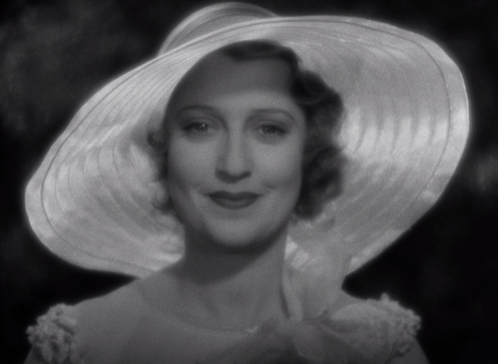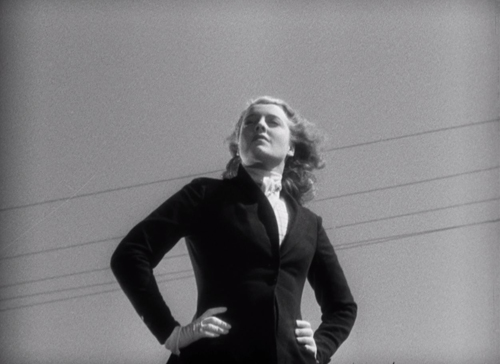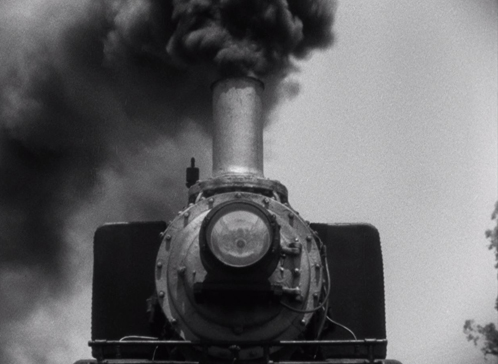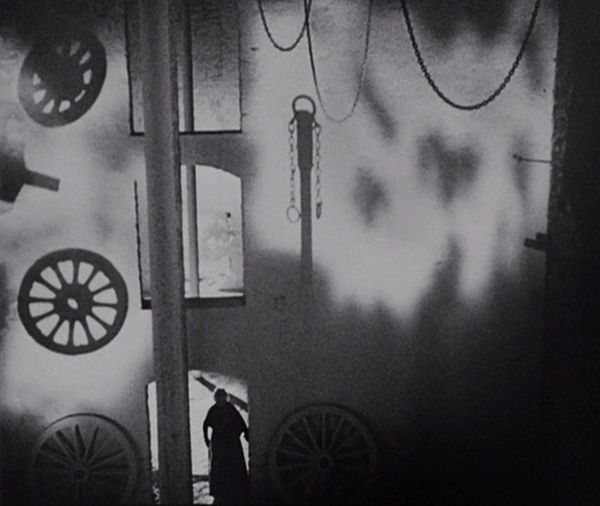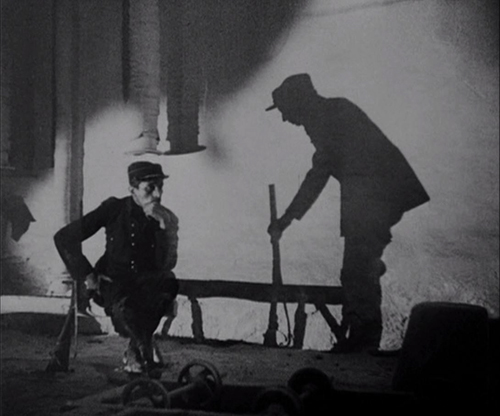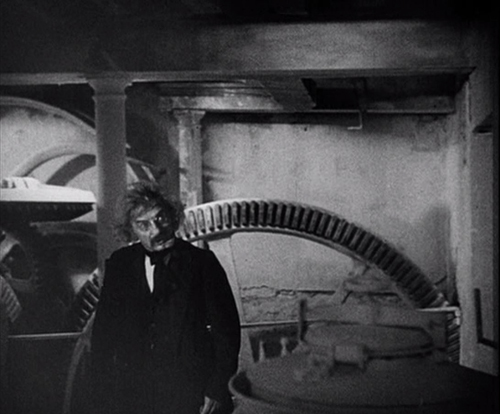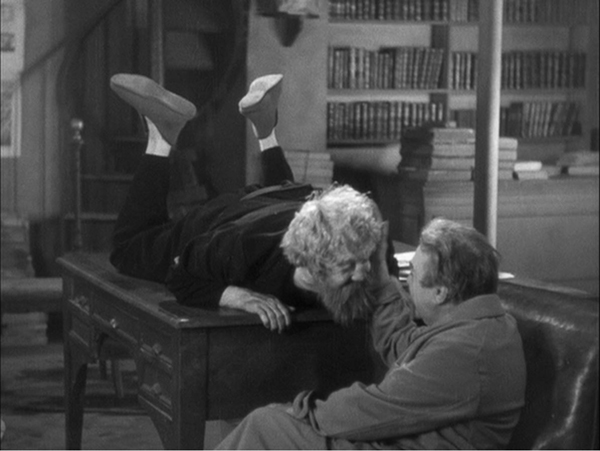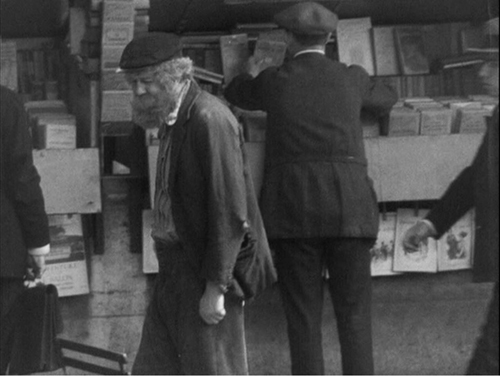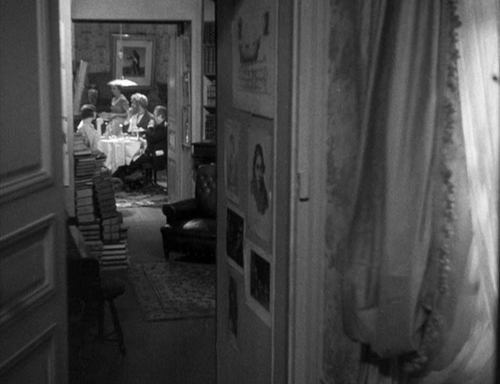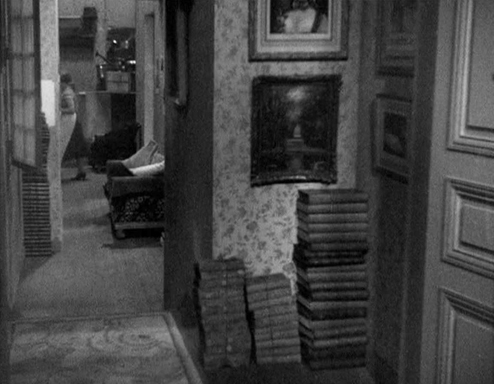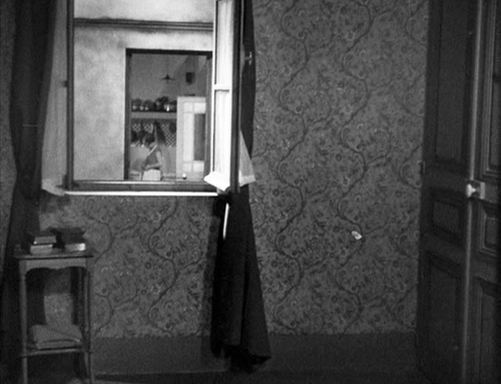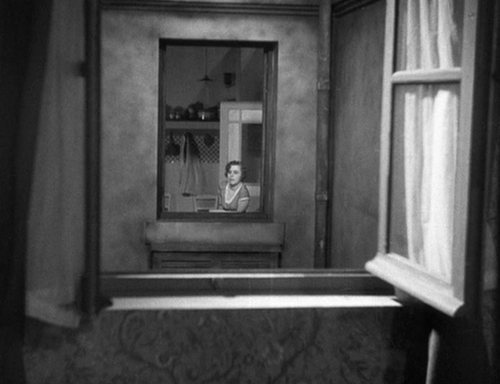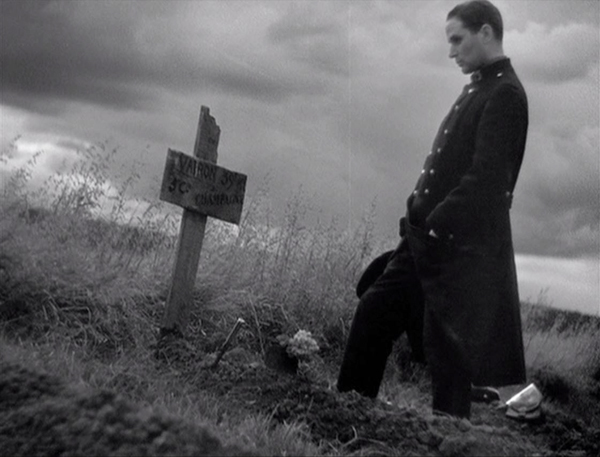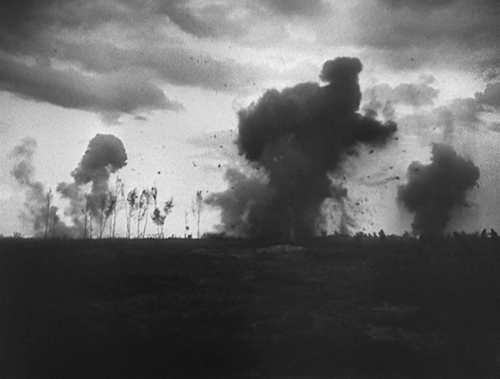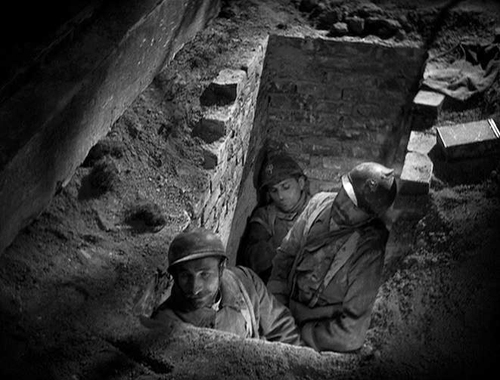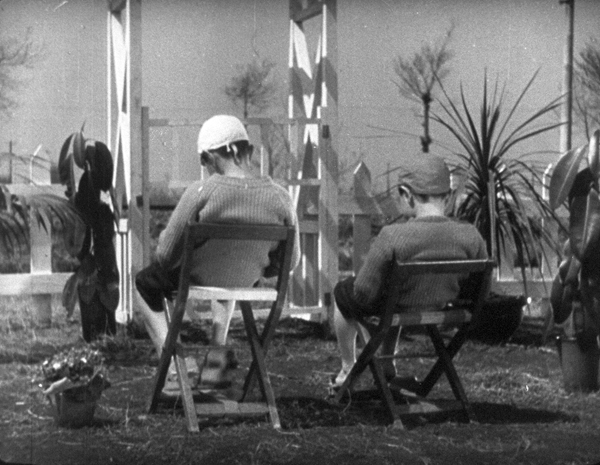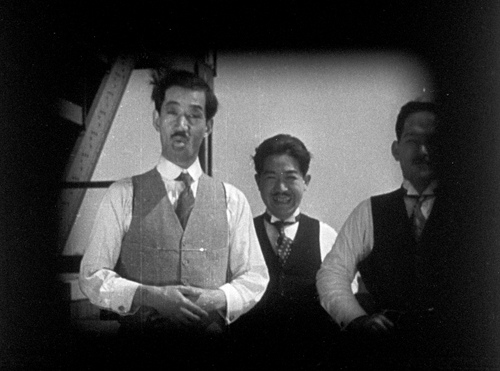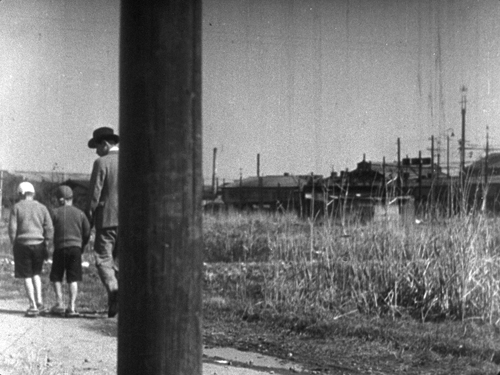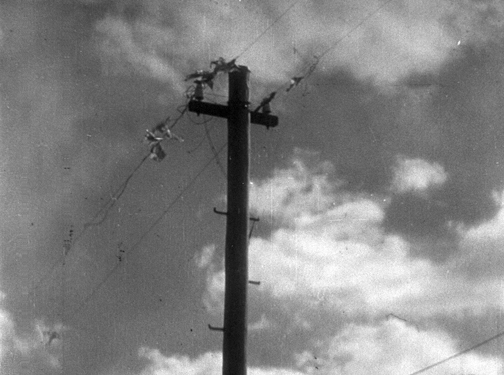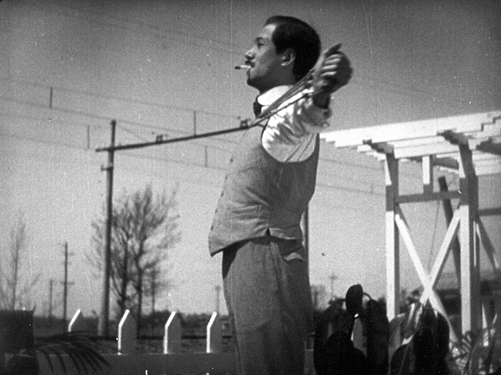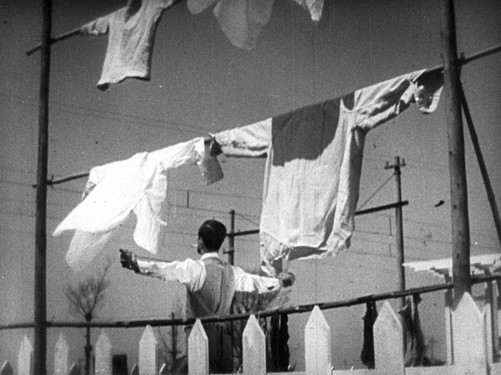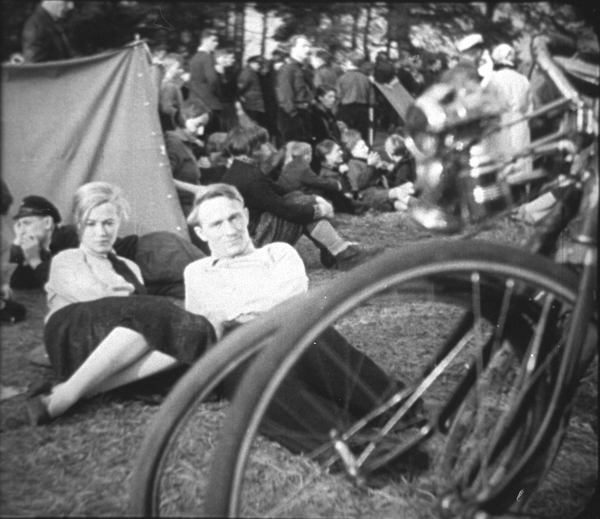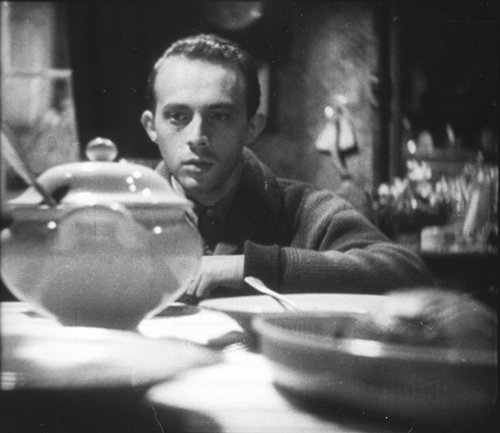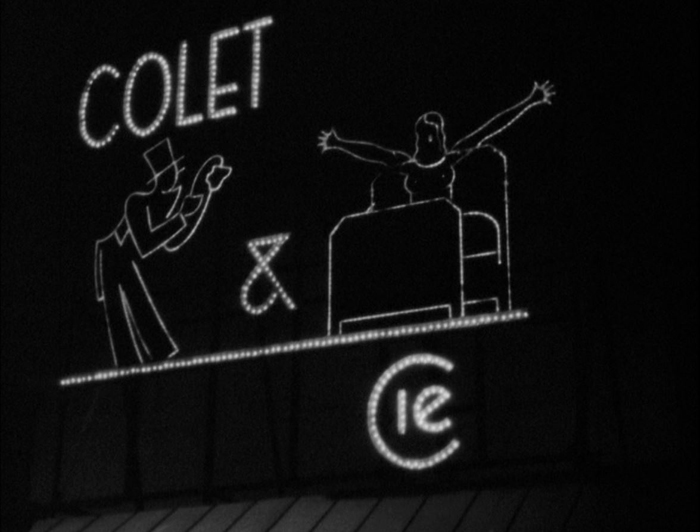The ten best films of … 1932
Saturday | December 31, 2022 open printable version
open printable version
Shanghai Express.
Kristin here–
The year draws to a close, and the internet abounds with lists by professional critics, educated fans, and clueless people proffering opinions on the ten best films of 2022. David and I avoid this custom, but fifteen years ago I stumbled into a habit of listing the ten best films of ninety years ago. Such films have by now stood the test of time, and they have one enormous advantage: no one is speculating about many Oscar nominations each will get.
Back in the day, only two of the films on my list got nominated at all, and those two collected a total of three Oscars. (For a hint at one winner, see the image at the top. He will feature prominently in this year’s list.)
These ten films are of course my own choices, and for those who disagree, they are quite welcome to make their own lists.
As usual, my list is a mix of very familiar titles and some not so familiar ones. My hope is to call attention to unfamiliar films that are well worth a look. Actually this year nine of the films should be familiar to any serious film student or fan, but the tenth is a masterpiece that deserves to be rescued from obscurity.
Most historians seem to agree that 1932 was the year when Hollywood emerged from the difficult transition to sound and made polished movies that regained the fluidity of cinematography, staging, and editing that had been lost to some extent. In The Classical Hollywood Cinema, Janet Staiger, David, and I proposed that the transitional period lasted from 1928 to 1931.
The same was not internationally true, however. My list contains one silent film, since the Japanese industry went through a considerably longer transition. No wonder that half of this year’s list atypically consists of Hollywood movies.
Previous entries can be found here: 1917, 1918, 1919, 1920, 1921, 1922, 1923, 1924, 1925, 1926, 1927, 1928, 1929, 1930, and 1931.
As usual, I’ll try to point readers toward the best available Blu-rays or DVDs. Those who prefer streaming should be able to find these titles for themselves. David and I prefer discs, at least for important films. With the decline of access t0 35mm and 16mm prints, studying films closely has become more dependent on discs (which also still have better quality images than streaming). Eventually, with streaming the only option obtaining frame grabs of the sort that illustrate these entries, close film analysis will become extremely difficult.
Hooray for Hollywood!
Trouble in Paradise
Ernst Lubitsch is one of the best-loved of film directors, both within the film industry and among cinephiles. I was lucky enough to be invited to teach a one-month summer course at the University of Stockholm on any topic related to silent cinema. I jumped at the chance to follow up on a vaguely planned project on Lubitsch, specifically a comparison of his German and American silent films. The course became a book, Herr Lubitsch Goes to Hollywood, now out of print but available through open access.
Trouble in Paradise is widely considered his best film, though I would say that at least Lady Windermere’s Fan and The Shop around the Corner are equal to it and others are not far behind.
The witty script is a model of sophisticated humor, and the casting is perfect. Herbert Marshall for a change got to play the suave hero, a dazzlingly expert crook who teams up romantically with Miriam Hopkins, his match as a wily pickpocket. In this 82-minute film, their hilarious courtship in a Venice hotel runs for a remarkable 17 minutes as they top each other in stealing things from each other, with her returning his watch and his flaunting her garter:
It doesn’t seem a minute too long. Essence of Lubitsch.
Kay Francis provides the potential trouble that threatens their idyllic life of thievery; she’s a beyond-wealthy owner of perfumery Colet & Cie. (see bottom)–so wealthy that she doesn’t really mind that her “secretary” may be a famous criminal worming his way into her confidence. Charles Ruggles and especially Edward Everett Horton provide hilarity as hopeless suitors wooing Madame Colet.
The comedy is played out in shining art-deco sets (above), lit with perfect three-point Hollywood lighting. As I demonstrate in my book, Lubitsch moved effortlessly from being the master of German silent film style to being the master of Hollywood style. It shows in every aspect of Trouble in Paradise.
The Criterion Collection DVD is still available.
Shanghai Express
The Josef von Sternberg/Marlene Dietrich teaming. The Blue Angel, featured on my list in 1930. The pair famously made a series of Hollywood films together, all built around the glamor of Dietrich. For me, the best of the bunch is Shanghai Express. It has a stronger script than the others, being set on a train traveling from Beijing to Shanghai during the Chinese Civil War (which had started in 1927). The device of a group on a journey lends the film both unity and suspense. It’s basically a thriller with a romance included. There are more characters than in some of the other Dietrich films, the typical bunch of eccentrics for such journey-plots lending interest, humor, and pathos along the way. Dietrich’s character is strong and likeable. She pursues the man she loves, but on her own terms while he stands around cluelessly keeping his upper lip stiff.
Then there are the incredible visuals. The set design is even more dense than usual for a von Sternberg film. The train windows, both exterior (top) and interior (above) are used brilliantly, and the rebel headquarters where the group is trapped for much of the second half has hanging gauze and stairways that create a complete contrast with the train scenes.
And the Oscar mentioned above went to … Lee Garmes, whose five films in 1932 also included Scarface (see below). Apart from his photography of the settings, he shows off with with other dazzling moments, including an extraordinary tracking shot following an official along the crowded platform for nearly the entire length of the train.
Needless to say, the glamor shots of Dietrich are among the most beautiful ever (Garmes also shot Morocco and Dishonored).
In general, the train station scenes are spectacular and give a remarkable sense of authenticity. Speaking of which, all the extras and minor characters seem to be played by Chinese, or at least Asian people. Anna May Wong has a prominent role as Hui Fei. Whether casting Warner Oland as the rebel leader Henry Chang would count today as “whitewashing” is up for debate. He was born in Sweden but claimed some Mongolian ancestry (so far unproven).
The Criterion Collection has the set of six Dietrich/von Sternberg films on Blu-ray and DVD. (My frames were pulled from an old TCM DVD pairing the film with Dishonored. TCM now offers Shanghai Express by itself on DVD or Blu-ray.)
A Farewell to Arms
The second Oscar-winner of the three mentioned above was Charles Lang, for his cinematography of A Farewell to Arms. (The film also won the third Oscar, for sound recording.)
Frank Borzage has been a staple of these ten-best lists, with Lazybones (1925), 7th Heaven (1927), and Lucky Star (1929). This may be his final appearance in these year-end lists, with growing competition internationally.
A Farewell to Arms adapts Hemingway’s novel of World War I. Gary Cooper plays Frederic, an ambulance medic who spends his spare time drinking and visiting brothels with his friend, Italian Dr. Rinaldi (Adophe Menjou). He meets Catherine, a nurse, at a party, and they fall immediately in love, succumbing to passion under the assumption that war’s uncertainties may not give them another chance. Becoming pregnant, Catherine departs for Switzerland to have the baby, but her letters to Frederic and his to her, are returned to sender. Frederic risks a firing squad by deserting and desperately trying to find her.
Like Trouble in Paradise and other 1932 films, A Farewell to Arms benefited from the fact that the self-censorship Hollywood studios instituted under the Production Code (aka the “Hays code”) in 1933 was not yet in force. The result is a grittier and more honest look at life in wartime than would be possible in later years. Apart from the quite restrained brothel scene (above), there is considerable emphasis on the forbidden unwed motherhood rife among the nurses Catherine works with.
The two stars make a convincing romantic couple of the kind Borzage had become famous for, and the cinematography is lovely. Lang, too, was an expert at creating glamorous images.
Amazon would very much like you to watch the film for free with ads or with a subscription to Paramount+ or with a free Fandor trial or by paying $2.99. Once you scroll past those enticements, you can find Kino Classics release of a Blu-ray or DVD in a remastered version by George Eastman House. It seems a bit overly dark to me, but maybe the original nitrate copy was, too.
Scarface
I have to admit that gangster films are not my favorites. Still, there are outstanding films in the genre, as the presence of von Sternberg’s Underworld on my 1927 list indicates. The early 1930s established the genre solidly, and Scarface stands out among the other classics examples of the time. I have not seen the two other such classics still commonly watched, Public Enemy or Little Caesar, for a very long time, but I recall not being very impressed.
Scarface marks Howard Hawks’s first appearance on one of my lists. It’s not up to his greatest films of the 1930s, Twentieth Century and Only Angels Have Wings (and some would say Bringing Up Baby).
One thing that makes Scarface stand out for me is its considerable use of humor, which seems unusual for a gangster film. Paul Muni, so dignified in his prestigious bio-pics of this same period, lets go and struts with aggressive arrogance, lets go in fits of rage, and makes Tony Camonte a figure of fun with his accent (“That’s putty nice”) and flaunted ignorance. When the woman he’s trying to impress and seduce remarks sarcastically that his clothes are gaudy, he delightedly takes it as a compliment.
The comic relief flirts with slapstick in the figure of Camonte’s “secretary,” who is illiterate, inept, and downright stupid. According to the AFI Catalog, his character name is Angelo, though Camonte addresses him as Dope. There’s a running gag of him being unable to get basic information from callers. At one point during a raging gunfight in a restaurant, he struggles to hear a caller’s name, unaware that a tank behind him has been pierced and is dousing him.
The film also has its visual pleasures. It was one of five films, along with Shanghai Express, that Lee Garmes lensed in 1932. The cinematography is appropriately less glamorous than in Shanghai Express, but it’s dark and occasionally beautiful, as in the hospital-invasion scene at the top of this section.
Many films of the early 1930s start off with an impressive moving-camera shot, presumably to show off before settling down into scenes with standard continuity cutting. Scarface has quite an impressive opening, with a plan sequence leading up to the first act of violence.
It begins with a low angle of a streetlight going out, and then tilts down and tracks rightward past a milk delivery cart and a sign that establishes the locale.
Continuing rightward, it reaches a tired janitor who removes a sign informing us that a stag party had been held there the night before. The camera tracks rights as he starts to clean up.
The camera follows through the wall and continues as he tackles the job in a room festooned with streamers–possibly an homage to the big party scene in Underworld. One artifact of the party that he finds is a brassiere that has lost its owner.
As he pauses, the camera leaves him to pan right and track in on a gang boss and two of his men talking about a potential danger from a rival gangster. He declares that he doesn’t want war and is satisfied with the money he’s making.
The men stand, and the boss promises an even bigger party in a week. Thus for a gangster, he seems a decent sort, not willing to stir up violence against those seeking to invade his territory.
The men leave, and the camera follows the boss across the room and into a phone booth. He starts to make a call.
The camera glides past him and away off to the right, where it picks up a menacing shadow in the next room.
It follows the silhouette as the unknown man walks toward the corridor where the phone booth is. Silhouetted against a translucent window, he pulls a gun, fires it, polishes it with a handkerchief, and throws it on the floor. (This sort of offscreen or partially offscreen treatment allows the violence to be less explicit, a ploy that continues throughout the film.)
As the killer disappears, the camera tracks back to the left, revealing the boss’s body. The janitor enters, sees it, takes off his work clothes, and tosses them in the phone booth.
The scene ends with a pan left to follow the janitor as he hurriedly moves through the mess and leaves.
My frames were pulled from the Universal Cinema Classics DVD, a release which has since come out on Blu-ray. (Amazon still has the same edition on VHS!)
Love Me Tonight
So many of the early 1930s musicals were stagey. The review musicals were series of numbers without a connective narrative (convenient because they could be popular abroad without dubbing or subtitling) or backstage musicals where a “put on a show” premise also led to numbers on a stage. But with the growing freedom of the camera and editing, the musical could become something more.
Love Me Tonight feels like a wildly enthusiastic celebration of that new freedom. The story is a modern Ruritanian romance. A Parisian tailor, played by Maurice Chevalier, travels to a country chateau to collect money owed him by a client, who is a member of the aristocracy. While on his way, Maurice bumps into the debtor’s sister, Princess Jeanette, and falls in love with her without realizing who she is. Once at the chateau, he is mistaken for a Baron and proceeds to charm the Princess’ entire family and gain her love–until his lowly birth is discovered. Throughout, the dialogue is witty and the music and songs, by Richard Rodgers and Lorenz Hart.
Much of the high spirits of the film arise from the fact that the songs are not sung by one or two people in a single locale. Instead, the music starts out in this limited way but passes along to other characters, spreading infectiously through a household or across a countryside. The process begins on a morning in Paris, as the city wakes up and goes to work. Gradually the rhythmic sounds of various activities build up to a symphony made of sound effects: a woman’s broom against a pavement or two cobblers’ hammers striking in counterpoint.
The first actual music when a man getting married that day picks up his formal outfit and Maurice sings about his work in “Isn’t It Romantic?” The groom goes out singing it, and it passes to a taxi-driver and then his fare–who happens to be a composer. Cut to a train, where he hums the music and writes it down (top of section), overheard by a group of soldiers; cut to a field where they march along singing it, and so on, until we reach the chateau and are introduced to the Princess, also bursting into “Isn’t It Romantic?”
Upon meeting Jeanette, Maurice woos her by singing “Mimi” to her. Here it’s a straightforward solo, though one that is filmed in an unusual fashion with Maurice singing and Jeanette reacting in shot/reverse shot directly into the camera.
Once at the chateau, Maurice apparently sings the infectious “Mimi” for the family and guests since there is a montage moving among them as they all cheerfully warble the song in their respective rooms. The same thing happens still later, when Maurice’s low birth is discovered; the song “The Son of a Gun Is Nothing but a Tailor,” similarly spreads throughout the building, including to the servants, who show a snobbery equal to that of their masters. Who can resist lyrics like those sung by a washerwoman?
Down upon my hand and knees/Washing out his BVDs/Is a job that hardly please me./If I had known I would have tore/The buttons off his panties for/The son of a gun is nothing but a tailor!
Overall one gets a sense that music and singing are irrepressible and ripple outward from the soloists to infect everyone within hearing distance.
Of course once Maurice has been thrown out, Jeanette decides to defy her family and races after his train on horseback. Mamoulian throws in some Soviet-style compositions as she heroically stands on the tracks and forces the train to stop.
Apart from its infectious style and music, Love Me Tonight has a wonderful cast, with Charles Butterworth as Jeanette’s wimpy but titled suitor, Charles Ruggles as the debtor son, Myna Loy as the man-hungry younger sister, and C. Aubrey Smith as the curmudgeonly father who becomes downright jolly under Maurice’s influence. Sheer entertainment.
Love Me Tonight is available from Kino Lorber on DVD or Blu-ray.
Hooray for the Rest of the World!
Vampyr
Two masters of cinema made vampire films a decade apart. I dealt with Murnau’s Nosferatu in the 1922 entry.
The two films could hardly be more different from each other. Murnau’s film was a plagiarized version of Bram Stoker’s 1897 novel, Dracula. He followed the original very loosely, cutting out most of the characters, including Van Helsing and hence the entire lengthy investigation process. Dreyer may well have known Murnau’s film, but it is hard to detect any influence or inspiration apart from the use of a book as exposition. The Universal version starring Bela Legosi was still in production when Dreyer finished shooting Vampyr. Instead, Dreyer drew even more loosely from the collection of horror-fantasy series short stories by Sheridan Le Fanu, published as In a Glass Darkly (1872).
Dreyer seems to have taken a few ideas from the stories, but does not use the narratives associated with those ideas. The notion of a female vampire is probably derived from one of the stories, “Carmilla,” though Le Fanu’s vampire is young and beautiful, while Dreyer’s is an elderly woman, Marguerite Chopin. The collection of stories is presented as having been case studies collected by a Dr. Hesselius, a researcher of the arcane. Allan Gray may be inspired by Hesselius, though he does no evident research and reacts in fear in most cases where he encounters anything strange and grotesque. Gray’s dream of being trapped in a coffin and carried off to be buried comes from “The Room in the Dragon Volant.”
On the whole, though, one of the most striking things about Vampyr is how little it adheres to the conventions of the vampire tale. It is not told as a collection of documents, as are Le Fanu’s stories (“Carmilla”is told in first person by Laura, the heroine and victim of the vampire) and Dracula (a collection of documentation by gathered by several characters). As in Nosferatu, a book is included to help present the “rules” of vampire stories, but the book is not written by Gray. It is given to him by the old Chatelain. The premises that vampires must travel in coffins full of dirt or will be killed if exposed to sunlight, so important in Nosferatu, are ignored here. Actually, the intention seems to be that Chopin is active mainly at night, but since the entire film was shot in murky daylight, it’s difficult to to tell night from day. Vampires also tend to be of noble birth, and we usually find out something about their family history. Chopin seems to be a local woman who somehow became a vampire.
To create a creepy atmosphere, Dreyer has Gray wander about observing menacing, unnatural, or unexplained phenomena in the neighborhood of the village of Courtempierre. These are not phenomena conventional to vampire stories, so they seem as mysterious to us as to Gray. Much of what Gray observes is never explains. Gray sees numerous shadows and reflections of beings who are not visible. He follows the shadow of a peg-leg man until it finally rejoins the soldier who should be casting it. Most vampires live in crumbling Gothic castles, but Chopin seems to have made her headquarters in a dilapidated factory of some sort. (Dreyer chose a deserted plaster factory whose white walls would show off the shadows cast on them.) Her main minions, a sinister doctor and the one-legged military man apparently do whatever they do there, waiting to do her bidding. As the images above and on the right below show, Dreyer creates a mysterious air to the building through the circles and curves of large gears, wheels, and hanging chains.
Beyond such motifs, there are the actors’ unpredictable exits and entrances into the frame during camera movement and the eerie offscreen sounds that hint at something disturbing happening nearby. David has analyzed all this in detail in his book, The Films of Carl-Theodor Dreyer (out of print but available from second-hand book dealers).
For the ending, Dreyer draws upon the convention of a stake through the heart as the way to kill a vampire. It isn’t Gray that figures this out. A remarkably passive protagonist, he sits dreaming of being buried alive while the old servant, initially a minor character, reads the Chatelain’s book, gathers the needed equipment, and initiates the task of the staking of the vampire in her grave.
The 1998 restored version of the film is available from The Criterion Collection on DVD or Blu-ray, with a particularly good set of supplements. These include a visual essay by Danish expert Caspar Tybjerg that deals in more detail with the influences of previous vampire literature and films on Dreyer’s work; I have drawn upon it for some of the information above. Vampyr also streams on The Criterion Channel, accompanied by some of these supplements as well as a video essay by David, “Vampyr: The Genre Film as Experimental Film.”
Boudu Saved from Drowning
Jean Renoir entered this list in 1931 with La Chienne. Although a grim melodrama for the most part, the film provides put-upon accountant Maurice Legrand with a happy ending as he leaves home and becomes a jovial tramp.
Boudu, the self-centered, careless tramp at the center of this film, is presumably not Legrand, despite being played by the same actor, Michael Simon, and Boudu Saved from Drowning is not a sequel. It almost could be, but this time the genre is comedy.
The opening sets Boudu up as an unusual tramp. He is not begging, and when a little girl offers him a small bill, he asks what it is for. “To buy bread,” she replies. Soon Boudu does beg by opening a car door for a rich man, and when the man can’t find any money in his pockets to tip him, Boudu hands him the small bill “To buy bread” and walks away.
Unexpectedly, Boudu jumps into the river in a suicide attempt. Lestingois, a prosperous bookseller whose shop and apartment are across the street, witnesses this and rushes out to dive in and save Boudu. He succeeds, receiving praise from the onlookers as a bourgeois who would take this trouble for a mere tramp. Lestingois is fascinated and amused by this “perfect tramp” and takes him in, offering him dry clothes, food, and a sofa to sleep on for the night, much to the disgust of his wife.
Boudu’s antics delight Lestingois, who treats him somewhat like a pet dog (top of section). He also gives Boudu a lottery ticket, which predictably will become a vital plot device later on. The tramp, however, disrupts the routine of the household–in particular sleeping in a spot that prevents Lestingois from making his nightly visits to the maid Anne-Marie.
Boudu lingers on, seeing this cushy home as a good setup; he tries to fit in by shaving his bushy beard and trying to dress respectably. He is utterly uncouth, however, shining his shoes on the wife’s bedspread, and knocking things off shelves, and causing a flood by leaving water running in the kitchen. Lestingois ultimately gets fed up with him–but in the nick of time Boudu wins the lottery and the attitude of the household changes. Anne-Marie, who supposedly loves Lestingois, suddenly becomes engaged to him.
On the wedding day, however, as the happy couple are in a rowboat on the river, Boudu upsets the boat and floats away to resume his old life as a tramp.
Stylistically the film is distinctly Renoirian. He shot his exteriors in Paris streets and parks, seemingly concealing the camera in some cases. A telephoto lens captures Boudu wandering along the bookstalls on the banks of the Seine, with the other people presumably ignoring him as a real tramp.
In a modest way, Renoir used the sort of roving camera movement that he would later develop into a major feature his late-1930s masterpieces. One scene starts with Lestingois and his wife eating a meal along with Boudu, seen from a distance down a hallway. As Anne Marie finishes serving, she exits left, and the camera moves left into the next room, where she is glimpsed walking toward the kitchen. It continues moving and stops briefly as Anna Marie enters the kitchen and puts down her tray. As she comes forward to the kitchen window, the camera tracks closer to the foreground window and stops, still at a distance as she talks with an unseen neighbor.
Boudu Saved from Drowning is available on DVD from The Criterion Collection and streams on The Criterion Channel (along with some supplements).
Wooden Crosses
Raymond Bernard’s Wooden Crosses is this year’s masterpiece unknown to most modern viewers, and I cannot recommend it highly enough. I discovered the film through The Criterion Channel. David and I were relatively early in our “Observations on Film Art” series of supplements–early enough that the service was still called Filmstruck. In picking a film for a video essay, I thought it would be helpful to choose titles that were obscure but very much worth calling attention to.
One such film on the Criteron list was Wooden Crosses. I was dubious about it, since my only association with Bernard’s work was the 1924 historical epic, The Miracle of the Wolves, which I had seen back in my post-graduate days and found pretty turgid. Nevertheless, I gave Wooden Crosses a try and was bowled over by it. My video essay, “The Darkness of War in Wooden Crosses,” became number 16 and is available to subscribers.
In some ways Wooden Crosses is France’s great anti-war film of the early 1930s, following Hollywood’s All Quiet on the Western Front and Germany’s Westfront 1918, both of which were in my top ten for 1930. For me, it’s the best of the three.
The film begins with stock footage of Parisian crowds cheering the young men signing up to fight and marching off to war. Like The Big Parade, it introduces the war from well behind the lines, as new recruits arrive at a farmyard where the more experienced troops are billeted. The action takes place shortly after the Battle of the Marne in autumn of 1914; it was won by the French, but did not succeed in achieving ultimate victory. In Wooden Crosses, the experienced men scoff at the recruits for having arrived too late to experience any fighting.
Their optimistic assessment proves wrong, and the group is ordered to march to the front-line trenches. The result is an impressive sequence shot at night as the group goes through open areas, woods, and finally ends neck-deep in the trenches looking out across no man’s land in the darkness. As my video-essay title suggests, there is a considerable amount of night footage in the film. One point I make in that essay is that the epic footage in the film made an impression in Hollywood:
In 1935, the head of the newly merged 20th Century-Fox studio, Darryl Zanuck, bought the North American rights for Bernard’s film. He didn’t intend to release it theatrically. Instead, he realized that the spectacular battle footage was beyond anything that the studio could afford, and he wanted to reuse it.
The film it was to be used in was Howard Hawks’s The Road to Glory, released in 1936. Hawks, however, wasn’t just keen to use the battle footage. Like me, he seems to have admired the many night scenes. He said of Wooden Crosses that it had “Some fabulous film in it, marvelous scenes of great masses of people moving up to the front and through trenches—wonderful night stuff.”
The group of soldiers are quickly and marvelously characterized, notably by Charles Vanel as the group’s quiet, sensible Corporal and Gabriel Gabrio (Javert in Bernard’s Les Misérables) as the sarcastic, boastful Sulphart–a key source of comic relief in the film. Graduallynew volunteer Gilbert Demachy emerges as our main point-of-view character, though the others are kept prominent. There is a suspenseful series of scenes as they hear the sounds of German sappers tunneling below their dugout to lay mines. They are ordered to stay put, as there is plenty of time before the explosions, but as we discover, this is an example of a common motif in these films: the incompetence of the leadership.
One of the film’s most impressive aspects is the epic recreation of battle scenes. There’s no stock footage here, and there are shots over vast areas of no man’s land with explosions going off among the actors.
The climactic battle goes on and on–ten days, as repeated superimposed titles inform us–and conveys the relentlessness of the struggle that the group undergoes.
The battle ends in a long, tense scene, ironically set in a cemetery where many of the graves have been blasted open. These substitute for trenches as the men hunker down under German attack.
As with some of the other films on this year’s list, the cinematography of Wooden Crosses is extraordinary. It was shot by Jules Kruger, who had worked with major French Impressionist directors, notably Marcel L’Herbier on L’Argent and Abel Gance’s Napoléon, the latter of which no doubt gave him considerable experience with epic battle scenes. His most famous films after Wooden Crosses were La belle équipe and Pépé le Moko.
The Criterion Collection did a great service by releasing Wooden Crosses paired with Bernard’s Les Misérables in their Eclipse series. It also streams permanently on The Criterion Channel along with my video essay linked above. (New Year’s resolution: watch more Bernard films. I should give The Miracle of the Wolves another chance and set aside plenty of time to watch Les Misérables, a three-feature serial adaptation of the novel that clocks in at 281 minutes.)
I Was Born, But …
Yasujiro Ozu makes his third appearance in a row on these lists (see here and here for the first two). If I were to live to 102 and if I were still posting these lists, his last film would be on the 2052 list. That’s unlikely, but even so, he will probably be the director most represented on these lists as long as this series continues. I am still pondering whether to give him three spots on the 2023 list or just group his three masterpieces from that year as tied for a single spot.
I Was Born, But … was the first of Ozu’s silent films to become available in the West, and it is still probably the best known. So many of his early films are lost, but this may be the one where he achieved the perfect balance of humor and poignancy that characterizes so many of his best films.
Ozu is known for creating stories centered around the stages of life, often expressed as seasons in their titles, such as Late Spring‘s focusing on a daughter pushing the limits of marriageable age to care for her elderly father. His surviving early films often dealt with students or recent graduates struggling as “salarymen” in the job market of the Depression. In this film for the first time he shows the woes of the salaryman largely from the viewpoint of his children. Many of Ozu’s films are based on relations between parents and children young or grown. Those that dealt with young children were among his masterpieces: Passing Fancy, The Only Son, There Was a Father, Record of a Tenement Gentleman, and Ohayu.
The salaryman films deal with the difficulties of getting jobs, competing with colleagues, and surviving on meager wages. I Was Born, But … adds the problem of the subservience and even humiliation a salaryman sometimes undergoes and how it affects his family.
The story unfolds in parts that to some extent echo each other. Early in the film the two sons are bullied at school by the son of their father’s boss. They manage to defeat the bully and in a show of bravado boast that their father is the best in the world.
Later the family is invited to a gathering at the home of Yoshii’s boss, who shows some home movies of his employees showing off for the camera. These include Yoshii making faces and playing the fool, obviously at his boss’s insistence. The sons’ delight in seeing their father on the screen fades as they realize that their father has been humiliated and is not the great man they boasted about. Implicitly, Yoshii is being bullied as well but must submit in order to please his boss.
In an angry confrontation with their father, the sons accuse him of having proved himself not to be the man they had looked up to. The confrontation ends in their refusal to eat or speak to their parents. The parents admit to each other that their life is disappointing and not one they would wish for their children. The quarrel soon ends, with the boys accepting that their father is not the greatest.
As with That Night’s Wife (1930), Ozu is already using some of the techniques that would be part of his style for his entire career. For example, there is a transition between scenes that uses graphic values and objects in a series of images that do not behave like ordinary establishing shots.
I Was Born, But … is available in another DVD set in The Criterion Collection’s Eclipse series, “Silent Ozu: Three Family Comedies.” The other two are the charming Tokyo Chorus and the wonderful Passing Fancy (which will definitely appear on next year’s top ten). Along with a slew of other Ozu films, it also streams on The Channel. Many of you know David’s book, Ozu and the Poetics of Cinema; it’s long out of print but available through open access on the Center for Japanese Studies Publications site (with the frames from the color films in color!).
Kuhle Wampe or Who Owns the World?
Slatan Dudow’s Kuhle Wampe, scripted by Bertolt Brecht, was a bold pro-Communist film made in the year before the Nazis swept into power.
Kuhle Wampe, named for the workers’ camp in which much of it is set, starts with the dire situation for the working class in Depression Germany. A typical family is singled out, with the son returning home after one of many fruitless searches for work (below). His parents blame him for his failure to find work in a society where unemployment is rampant. Their anger drives him to suicide. A neighbor woman remarks resignedly to the camera, “One fewer unemployed.”
The boy’s sister Anni becomes one of the main characters. Another is Fritz, her boyfriend, a leader in the labor protests in a local factory. When Anni becomes pregnant, the pair split up but eventually reunite when her family is evicted and moves into the tent city of the title, run by a Communist group (above). Communism is portrayed as a solution to the problems presented earlier. A lengthy sequence at a Communist youth sports festival emphasizes the happy life on offer by the Party. In the final scene, directed by Brecht himself, Anni and Fritz have an argument about the world’s financial dilemma with some middle-class passengers.
In 1933, Brecht fled the country, eventually ending up in Hollywood, and Dudow was expelled from Germany, only returning after the war to help found the Communist-run East German film industry.
As far as I can tell, the only DVDs or Blu-ray discs available in the US are imports and may not play on encoded machines. (It’s not even on YouTube!) For those with region-free players, the BFI’s release in either format seems to be best source.
Trouble in Paradise.












